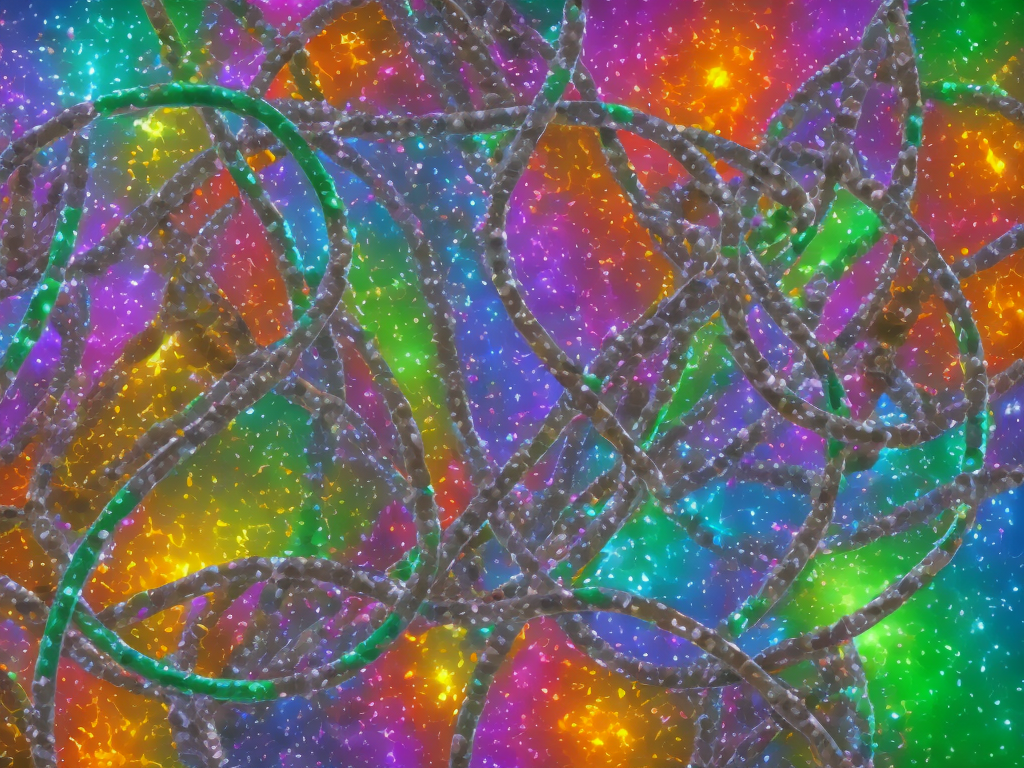
The DNA and RNA molecules are essential components of every living organism. They contain genetic information that determines an individual's characteristics and traits. These molecules contain four basic building blocks, which combine to form a long, twisted structure that is unique to each individual. The composition and structure of DNA and RNA govern their function and transcription processes.
DNA
Deoxyribonucleic acid (DNA) is a double-stranded molecule that carries genetic information in its sequence of nucleotides. It consists of four nitrogenous bases – Adenine, Guanine, Cytosine, and Thymine – connected to a sugar (deoxyribose) and a phosphate group. The nitrogenous bases pair up in a complementary fashion, A with T and C with G, forming the famous DNA double helix structure.
The DNA molecule is made up of a phosphate-sugar backbone that provides stability, while the nitrogenous bases provide the genetic code. The give-and-take relationship between these two components is responsible for carrying and transmitting genetic information. The basis for this relationship lies in the unique pairing of the nitrogenous bases using hydrogen bonds.
Purines and Pyrimidines
The bases in DNA can be categorized into two groups based on their chemical structure. They are Purines and Pyrimidines. Adenine and Guanine are purines with a two-ring structure, while Cytosine and Thymine are pyrimidines with a one-ring structure. The difference in the number of rings affects their bonding with other bases in the DNA double helix.
The bonding between pyrimidines and purines is specific, with each always pairing with its complementary base. The nitrogenous bases in DNA always occur in pairs, with a hydrogen bond forming between the purine and pyrimidine nitrogenous bases to attach the base pair to the hydrogen's backbone. The specific pairing of nitrogenous bases using hydrogen bonds is essential for DNA's structural stability, as it prevents other molecules from interrupting its genetic code.
Sugar-Phosphate Backbone
The sugar-phosphate backbone is the second critical component of the DNA molecule. The backbone consists of a phosphate group and a deoxyribose sugar. The phosphate groups are negatively charged, while the sugar molecules contain five carbon atoms that are covalently bonded to each other.
The phosphate-sugar backbone provides the structural stability of the DNA molecule. It maintains the distance between the nitrogenous bases and prevents the helix from twisting in strange ways that could affect the genetic code's integrity. The backbone of each strand runs in the opposite direction (antiparallel) because the structure of deoxyribose sugar is asymmetrical.
RNA
Ribonucleic acid (RNA) is another essential nucleic acid that is similar to DNA. RNA is a single-stranded molecule that is found in both the nucleus and the cytoplasm. Unlike DNA, RNA is more involved in carrying out the genetic code than in storing it. RNA has several forms, including messenger RNA (mRNA), ribosomal RNA (rRNA), and transfer RNA (tRNA).
RNA's structure is similar to that of DNA, but it contains the nitrogenous base Uracil instead of Thymine. Uracil forms a pair with Adenine in the RNA molecule rather than Thymine. RNA contains four nitrogenous bases: Adenine, Guanine, Cytosine, and Uracil, connected to a sugar (ribose) and a phosphate group.
Structure of RNA
The RNA molecule is made up of three components: the nitrogenous bases, the sugar-phosphate backbone, and the ribose sugar.
Ribose Sugar
The ribose sugar is a chemical compound that has five carbon atoms with one of them being part of a ring structure. The ribose sugar is similar to the deoxyribose sugar used in DNA, but it contains an additional hydroxyl (-OH) group attached to the 2' carbon atom. The 2' carbon position makes RNA more chemically reactive and makes RNA less stable than DNA.
Phosphate-Sugar Backbone
Just like DNA, RNA contains a phosphate-sugar backbone. The backbone of the RNA molecule is formed from alternating phosphate groups and the ribose sugar. The phosphate groups are negatively charged, which gives the RNA molecule an overall negative charge.
Nitrogenous Bases
RNA contains four nitrogenous bases: Adenine, Guanine, Cytosine, and Uracil. The bases pair up in a complementary fashion, with Adenine always pairing with Uracil and Guanine pairing with Cytosine. Two complementary RNA strands can form hydrogen bonds, folding the RNA molecule into a unique three-dimensional structure that can perform specific functions.
Function of RNA
RNA acts as an intermediary between the DNA and the protein synthesis. RNA helps to transfer genetic information from the DNA to the ribosome, where it is translated into proteins using the information in the RNA molecule. RNA is involved in several important cellular processes, including transcription, translation, and genetic regulation.
In conclusion, both DNA and RNA molecules are essential in carrying out genetic information in living organisms. Their unique compositions and structures impart significant roles in storing, encoding, and transferring genetic information. The nitrogenous bases, phosphate-sugar backbone, and ribose sugar are the components that create these essential molecules, with DNA providing genetic blueprint while RNA is actively involved in carrying out the information. The hydrogen bonds that form between the complementary bases of these components are critical for maintaining the structural stability of the DNA and RNA molecules. Overall, these components form an essential foundation for the function of both DNA and RNA molecules, ensuring faithful transmission of genetic information from generation to generation.
 Self-Instruct
Self-Instruct